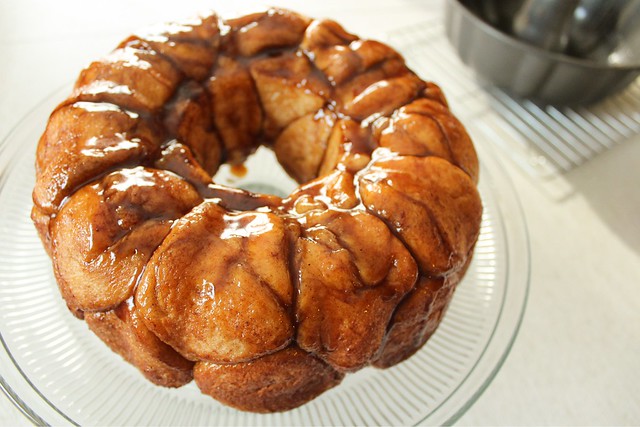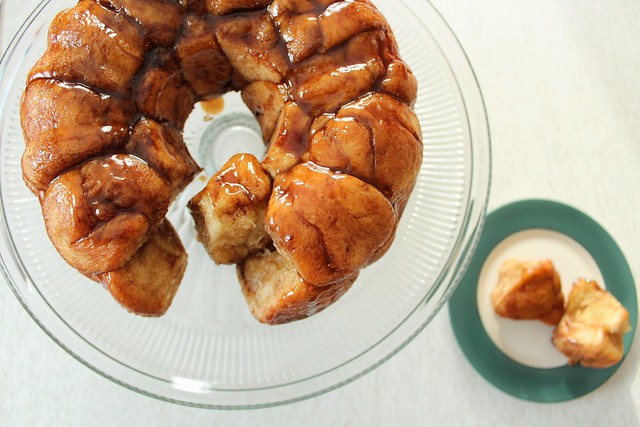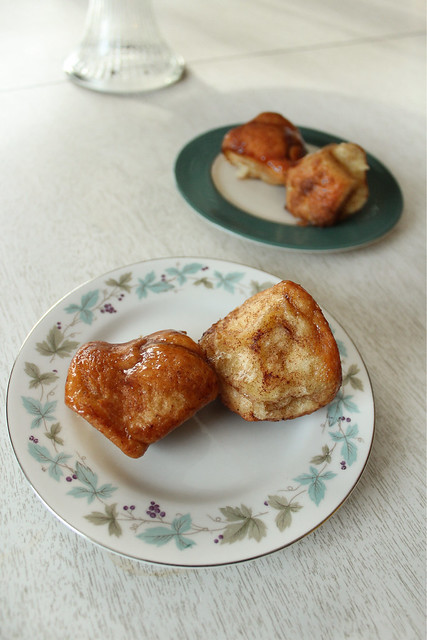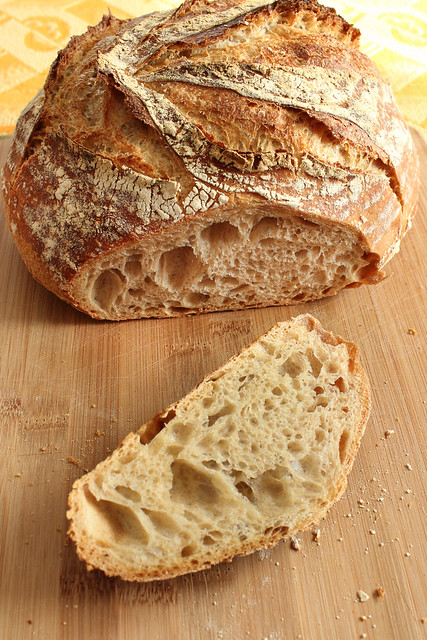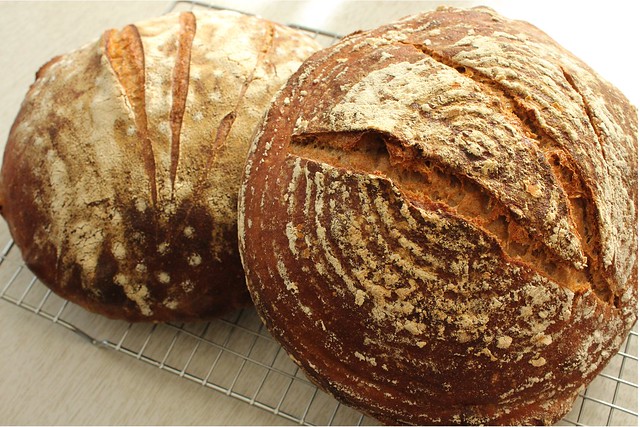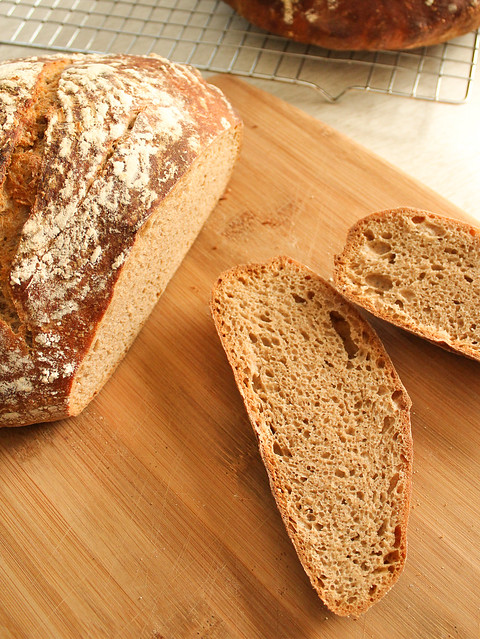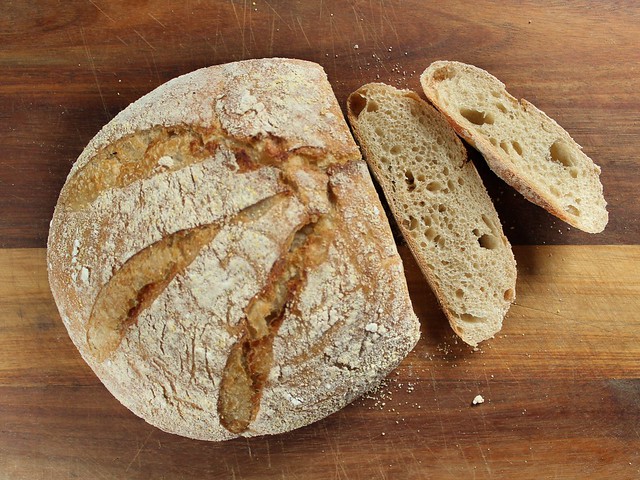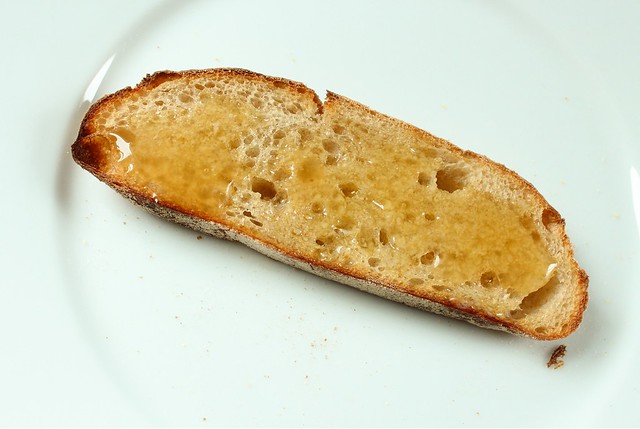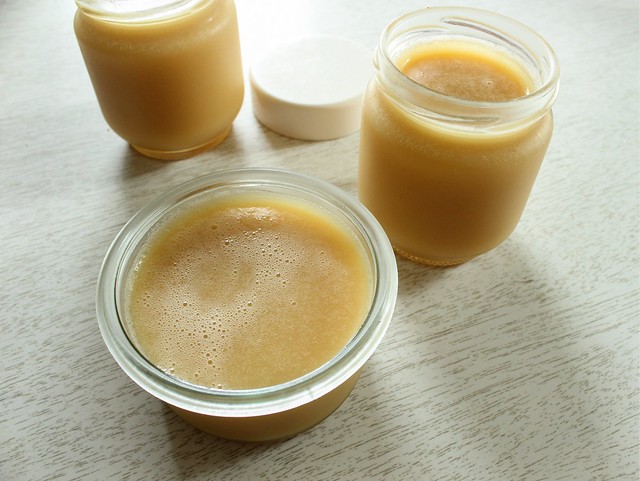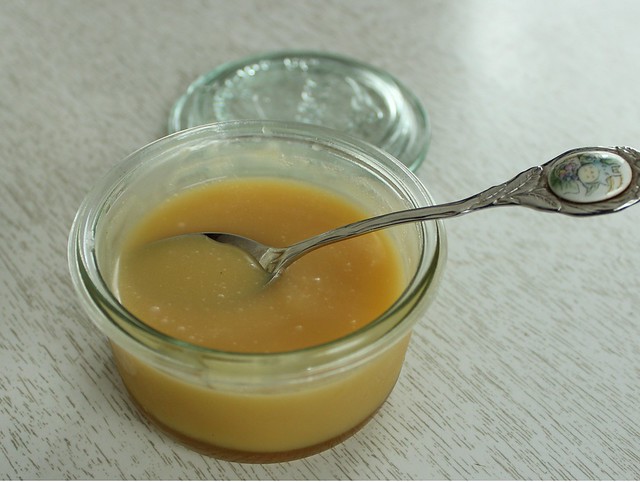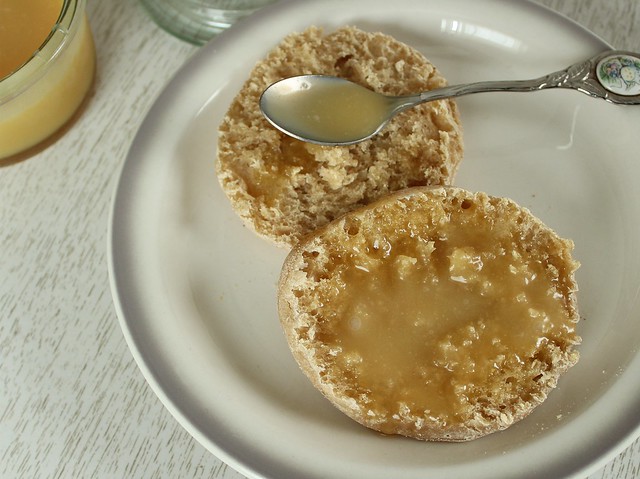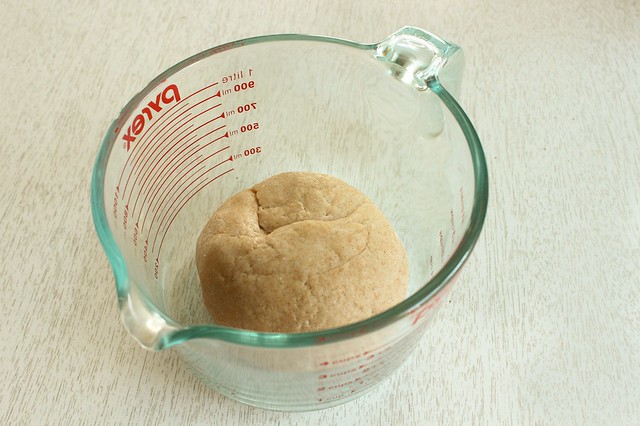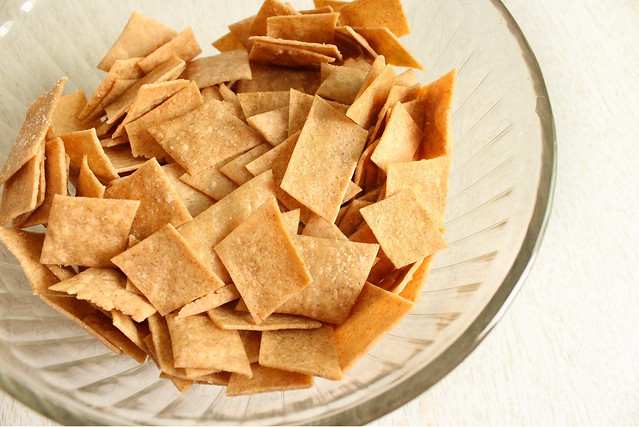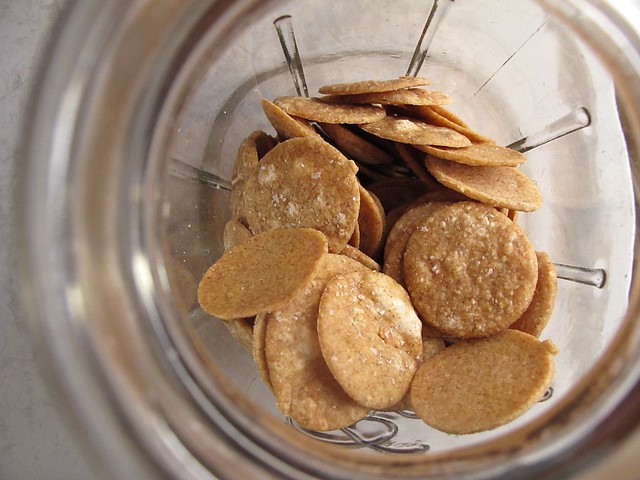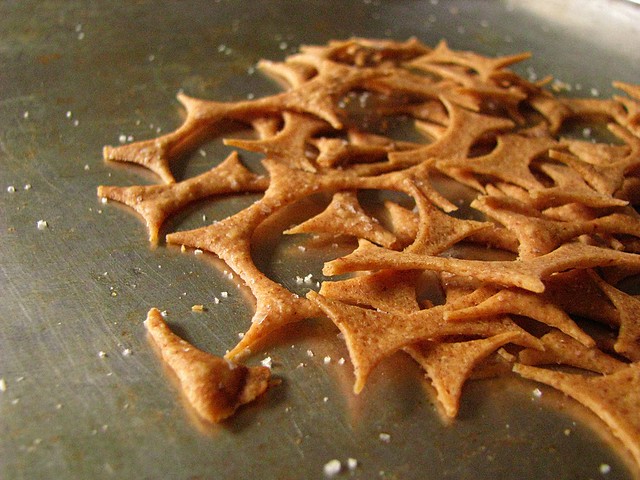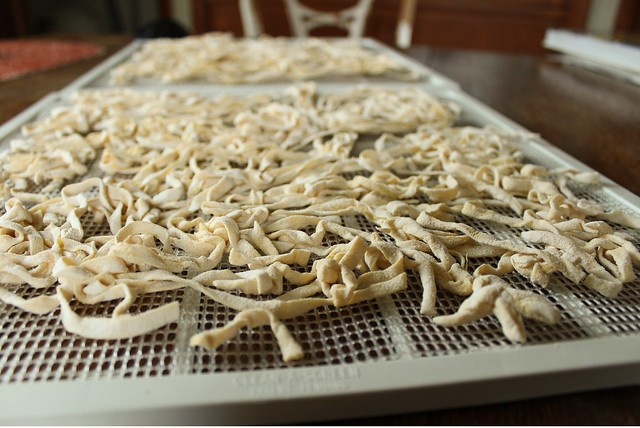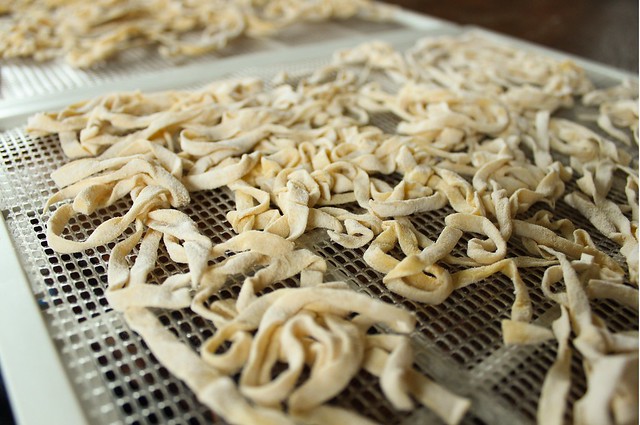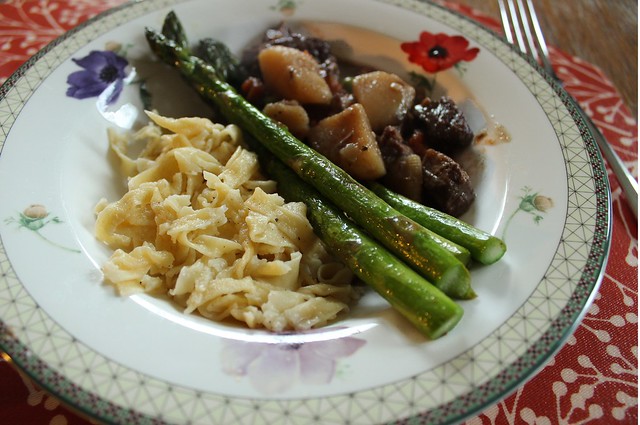Monkey bread. A pretty straightforward breakfast sweet, whose charm lies in the communal, pull-apart nature of the finished loaf. I've never made monkey bread, but I have made many pans of cinnamon rolls, and thanks to Sourdough Surprises I had also made babka. I married the two for this challenge, basing the monkey bread on Nancy Silverton's brioche recipe and hastily mixing up some sugared cinnamon to roll the portions in before letting them rise in a bundt pan.
I forgot how much I loved Silverton's brioche recipe. I halved the recipe and ended up with about 2 lbs. of dough, suspiciously perfect for one 12-cup bundt pan. I planned it out 3 days before Valentine's day, so I could bake it for a somewhat special morning. This bread is not unlike a soufflé in that it tastes best moments after leaving the comfort of the oven. When pulled apart barely cooled, the little puffs of dough taste feather light, a quality that leaves soon after the heat is gone. I wouldn't say it's any less delicious when cooled, just different. But that said, I'd probably recommend planning ahead to appropriately devote the morning to enjoying it.
Since I recounted the recipe for brioche on the babka post, I'll not post it here. I used half measurements, by conventional weight, and my yield on the dough was almost an even 2 lbs. I portioned the dough into 1 oz. bits, then rolled each into a taut ball. Meanwhile, I had melted about 4 tablespoons of unsalted butter in a pot on the stove. I also had mixed a dish of approximately 1/2 c. brown sugar, 1/4 c. granulated sugar, a few generous shakes of the cinnamon jar, a pinch of cloves and a pinch of salt. When all the balls were ready, I rolled them first in butter and then in the cinnamon sugar and then positioned them concentrically in a well buttered 12-cup bundt pan working from the center out. I sprinkled any leftover sugar mixture evenly over the top, taking care to let some fall down into the crevices. When the dough appeared about half risen, I preheated the oven to 350.
I baked the bread for about 35 minutes if I remember correctly. I checked the internal temperature when the top looked nicely browned, and it was around 200 degrees, so I figured (correctly) that it was done. I let the bread cool in the pan for 5 minutes before inverting it onto a plate - during which time I could see the bread settle down into the pan and shrink back a little bit. After inversion I was surprised at how beautifully glossy the top became; this was short lived, since I didn't go overboard with the sugar and it absorbed into the tops of the puffs as they cooled more completely.
I was also surprised how much the dough rose. I know I shouldn't have been, but I guess 3 days of preparation and waiting, and then the beating the little portions into submission... I thought I had worked all the life from the bread. Sourdough continually surprises, it has a deep life that is hard to beat back.
This bread is really not all that sweet. I mean, it is sweet, but it's not tooth-achingly sweet. It's a polite sweet that tricks you into eating far too much. I had 32 light little puffs of portioned dough and they didn't last long... I didn't eat them all myself if that's what you're thinking, but I certainly could have.
I'm excited to look around at the other ideas this month. I know I could have taken monkey bread to a savory place, but I just couldn't bring myself to do it. I'm curious how many were brave enough to tackle that!

